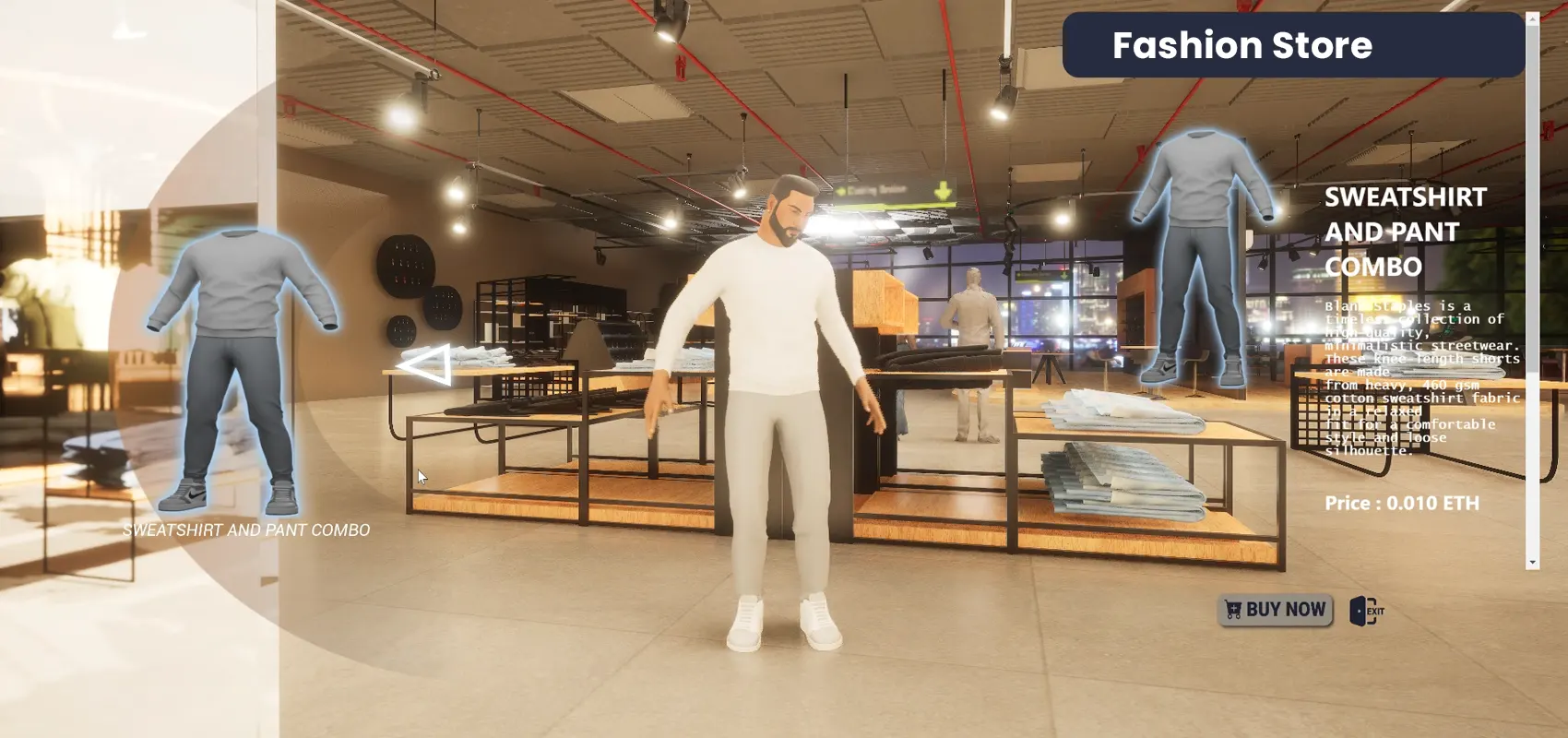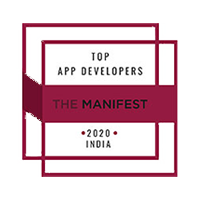By 2030, the Metaverse market is expected to reach somewhere between $8 Trillion to $13 Trillion. Also, the digital demand for fashion and luxury is expected to generate additional sales of around $50 billion by the same year.
Metaverse is a great place for the fashion industry. In fact, leading brands in the industry have already made a lot of buzz in the market through their innovative offerings in the Metaverse. They are using Metaverse components such as NFT, Cryptocurrency, AR, VR, etc. to attract youngsters, tech-savvy, and fashion enthusiasts through eye-catching fashion wear existing in the physical and the digital world.
Read this blog to understand how Metaverse is revolutionizing the fashion industry and what are the ways to enter this world of trillion-dollar opportunity.
The Metaverse is transforming the Fashion Industry
While NFTs are allowing fashion businesses to offer high-end, unique, and attractive fashion wear, AR/VR is helping them immerse consumers into a whole new unmatchable experience. Let’s see how each component is contributing to the growth and expansion of the fashion industry into the digital sphere.
NFTs for secured ownership, and trade in digital and hybrid products with exclusive community-building opportunities
Non-Fungible Tokens, or NFTs, are digital assets with built-in ownership authentication capability using blockchain. Many brands in the fashion industry have tapped into this high-potential component of Metaverse and rightly so.
NFTs are integrated into digital and hybrid products i.e. products existing in both worlds, the digital and physical worlds. This way, NFTs facilitate trade in digital forms of fashion wear. People can buy, sell, and exchange NFTs in the metaverse by authenticating and transferring ownership.
Thus, we can be sure of NFTs driving the creative fashion economy and opening new streams of revenue for the fashion industry.
According to reports, the top brands in fashion, including Adidas, Gucci, and Nike, have used NFTs alone to generate $137.5 million in sales in the Metaverse.
The benefits do not end there and also extend to the real world. Fashion players are using them to offer additional value to their consumers such as easy access to limited edition products, and membership in an exclusive community. This is what will ensure the long-term success of NFTs in the fashion industry as they bring real-world value to consumers.
AR/VR offers more value to the customer and meets ever-increasing expectations
Fashion Houses are using immersive technologies such as Augmented Reality(AR) and Virtual Reality(VR) for superior user engagement through improved shopping experiences and value-added products. Plus, it is aiding them to offer new forms of services for business expansion.
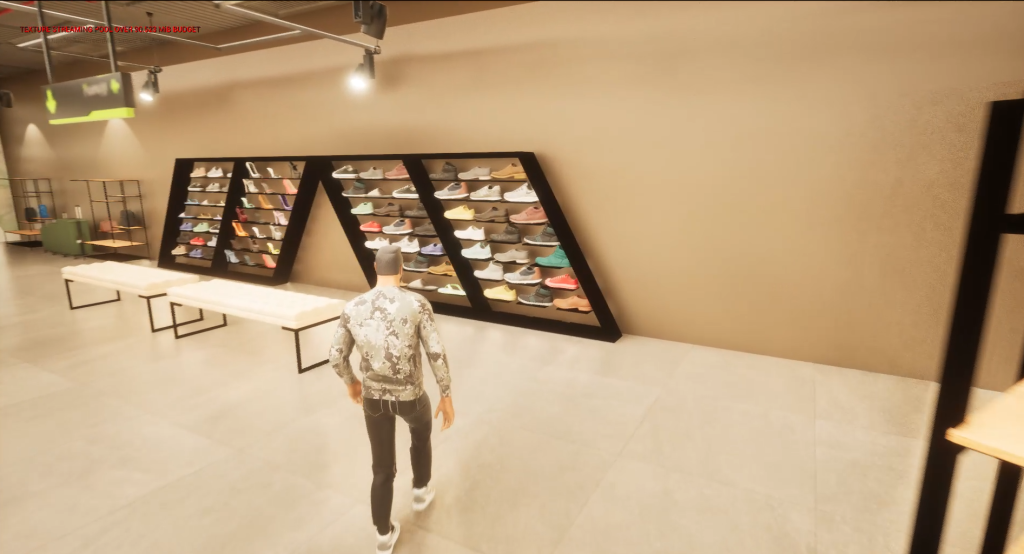
Prominent examples are AR/VR-driven digital showrooms where users access a range of products and try them virtually to see how it goes. Once they find what they like, they make the payment and buy it right there, easy as pie.
The product is delivered to their physical home. Interestingly, users can also buy digital(NFTs) or hybrid products for their avatars in the Metaverse.
Such innovations are important as 84% of users consider it somewhat important or important for the company they buy from to be innovative. It keeps users interested and engaged with the brand. These high-tech and improved services also build a high brand value in the eye of the consumer and reinforced their faith in the brand for their incessant effort to offer something new.
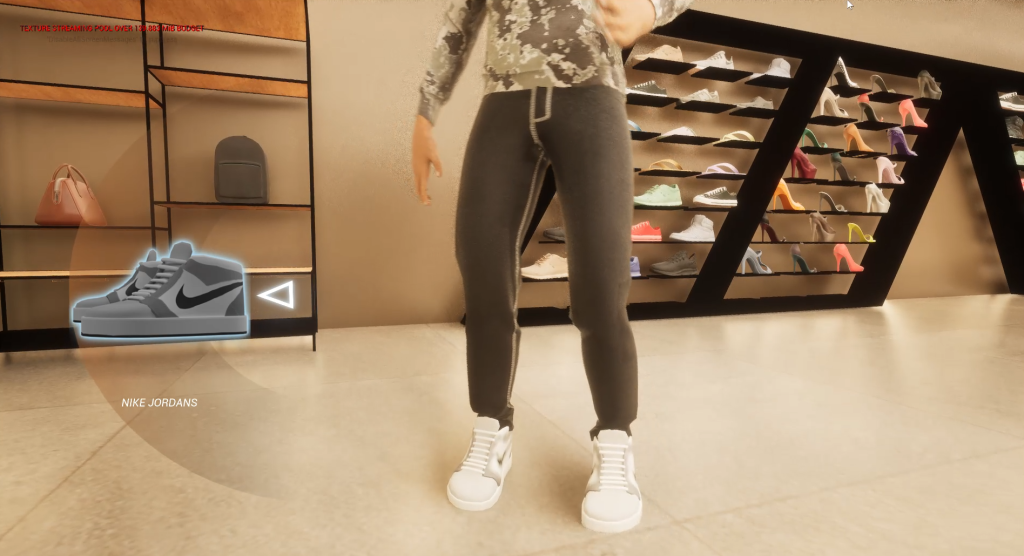
This way, fashion businesses are meeting ever-increasing consumer expectations and building long-lasting relationships. On the one hand, consumers get a unique and unprecedented experience, on the other, businesses achieve increased sales, and more importantly, reduced returns.
In fact, brands offering virtual try-on average 64% fewer returns compared to those that do not. Macy’s, an American chain of high-end department stores, saw its returns reduce to less than 2% post-introduction of virtual fitting rooms in its stores. On the same line, Shopify saw a 40% drop in returns last year thanks to AR visualizations.
Noticeably, the offerings do not end on just trials, virtuals stores do away with the need to maintain cumbersome physical inventories freeing up business cash flow for other high-yielding options like added product range and more personalization.
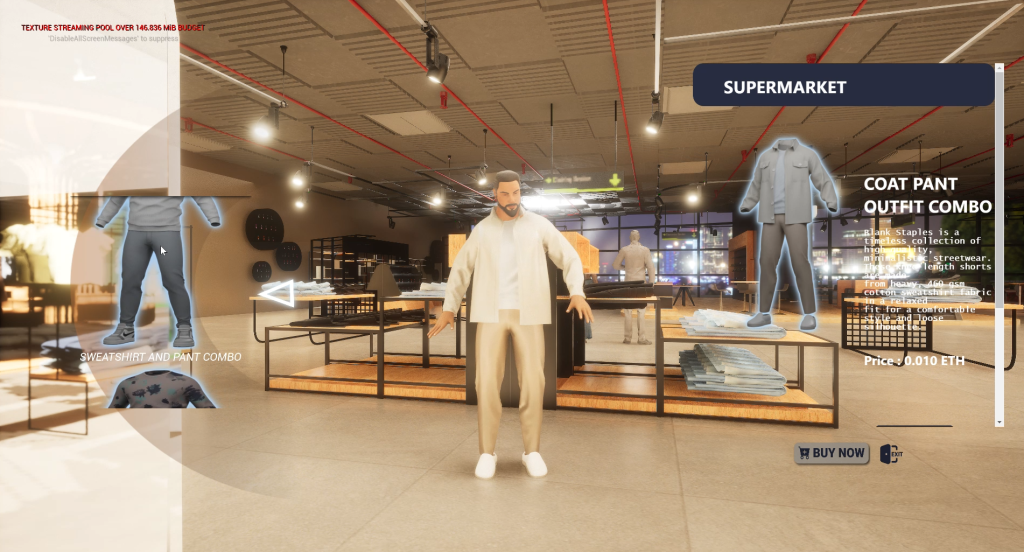
Talking of personalization, the current generation of fashion mongers just craves it and places high value on it and with immersive technologies on their side, fashion businesses can offer exactly that.
This points out how lucrative a full-fledged metaverse presence on the lines of Gucci Garden or Louis the Game can be.
Queppelin developed an impressive and end-to-end retail store metaverse solution for its client. Our developers held detailed discussions on the client’s goals and understood the relevant requirements for a fully-functional retail store. Multiple developers, animators, and 3D artists made sure that the client got the best retail store in the metaverse where high-end fashion products were displayed. We developed a wide-ranging inventory with premium garments and accessories found in a premium real-world fashion store.
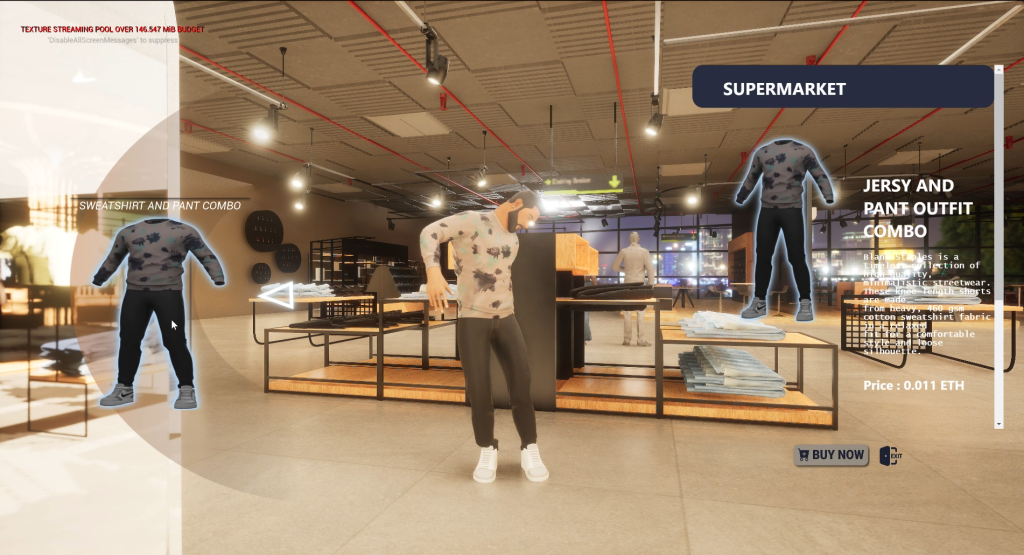
In this metaverse retail store, users enter with their digital avatars. They can visit different fashion segments, and try out the available products. As soon as the user chooses a product, all the important information regarding the product appears on the side of the screen along with the product image. Moreover, the avatar also wears the product in the metaverse so the users get a better idea and feel more confident about the purchase. This leads to around 40% fewer returns i.e. a lot of cost-saving by the client.
Users try on shirts, t-shirts, jackets, sunglasses, trousers, watches, and much more. The best part was that they could invite their friends and spend time shopping with them. This brought back the social component which lost in the isolated online shopping experience.
More space for the creativity of designers with new product classes
Metaverse is a virtual space free from various constraints giving fashion labels ample room to explore and innovate. All they need is to master digital tools themselves or collaborate with those seasoned in building metaverse like Queppelin.
To utilize the enormous potential of the digital world, fashion businesses are offering a new class of fully-digital fashion products that consumers are wearing in the metaverse. With such fashion wear, designers don’t need to worry about the material, design, or even test the viability of the finished product. Digital avatars can wear any garment of any type, design, fabric, and use.
Many big brands are flooding the market with digital fashion wear and designers are creating lavish virtual collections for fashion enthusiasts to get their hands on.
Louis Vuitton partnered with Riot Games to create original skins for League of Legends. It also released a fashion collection from the game that ranged from $170 for a bandeau to over $5k priced leather jacket.
Similarly, Balenciaga released its Autumn collection as part of a video game titled Afterword: The Age of Tomorrow. While they partnered with Fortnite for a hybrid collection, they recently partnered with Adidas to release a fully digital collection namely Balenciaga x Adidas Triple S digital collectible.
Similarly, Gucci‘s popular Queen Bee Dionysus bag was sold for 350,000 Robux, equivalent to $4k, way more than the bag’s real-world worth.
As users can also make their avatars wear their digital versions in the Metaverse, it is helping fashion brands in reaching out to a new audience consisting of youngsters who express themselves through fashion. At the same time, it is facilitating the origin of a new class of fashion products existing in both physical and the digital world.
Such a class of products either was unexisting before or was not feasible until now. But now, the metaverse is helping businesses attract youngsters wanting to flaunt their brand wear and choosing the same for their avatars.
Building new audiences by reaching GenZ and Millenials
The younger generation is tech-savvy and enthusiastic about innovations. As per Mckinsey, Gen Z spent an average of eight hours a day on screen. This is along with the fact that personal expression is a crucial part of their lifestyle. Plus, fashion is one of the ways they express themselves, and are ready to splurge on it.
All this combined, we can see that Metaverse is where youngsters spend most of their time socializing, working, playing, etc. They are consumers with the capacity and willingness to spend on fashion products. Thus, Metaverse is a great place for fashion houses to build their presence and reap the phenomenal benefits the virtual world has to offer.
This would certainly make you want to enter this virtual world asap and avail all these benefits to their maximum potential. To know how you can enter this world read the next segment where we suggest ideas to make an impactful entry into the metaverse.
Blockchain altering the business operations
Blockchain is a digital ledger that stores data decentrally on all nodes in its network. The data stored in it cannot be altered in any condition. It is one of the key components of the Metaverse and as per experts, it has the potential to add $1.76 trillion to the global economy by 2030.
There are various advantages of blockchain to fashion businesses and their operations.
To start with, blockchain automatically facilitates the tracking of transactions due to decentralized storage. It stores, manipulates, and disperses data without human intervention. This brings speed and transparency into the business operation. Moreover, since blockchain is unchangeable, fashion businesses can use it to authenticate their products and protect it from counterfeiting.
Another important feature of Blockchain is the Smart Contracts. Smart Contracts allow businesses to operate through programmatic or prespecified sets of rules and conditions. This does away with any kind of intermediaries and accelerates business processes. For example, basic administrative functions like payroll management, data management, and supply chain management can be executed automatically without delay and in a better manner.
One well-known example is the Aura Blockchain Consortium, which was launched in 2021. It provides authenticated product history for luxury goods from famous brands like Prada, Cartier, and Louis Vuitton to the customer.
Brand image enhancement through environment-friendly efforts
Metaverse can also help fashion businesses to enhance their image and reach audiences with a much more positive outlook. Additionally, there are many commercial benefits to this approach. For instance, replacing physical samples with digital ones for the pre-production phase of designing and development can reduce a brand’s carbon footprint by a whopping 30%.
As per data, digital clothing emits 97% less CO2 and consumes around 3,300 liters less water per item.
Ways for Fashion-related Businesses to enter the Metaverse
As one of the leading metaverse development companies we have been actively watching the Metaverse transform many industries and fashion is one of them. Many big names in the industry have ventured into it and received huge returns. Not only they received financial gains but also garnered massive popularity on the back of the Metaverse buzz.
So, here are some options for you to make your way to the virtual land.
Taking the Gaming Route
Gaming is an obvious, easy, and successful route to the metaverse. First of all, the size of the gaming industry is huge mounting at $176 Billion and it is only going to expand. Second, it offers a humongous outreach to the brands thanks to its ever-expanding community of over 3 Billion.
To capture this huge market, fashion businesses can either collaborate with existing gaming platforms or they can launch their own game.
In the first option, existing gaming ventures act as a platform for fashion brands to exhibit their collections innovatively.
Fashion businesses can organize captivating digital events such as Fashion shows on the lines of various metaverse musical concerts organized by popular celebrities like Ariana Grande, Travis Scott, Marshmello, and many others. These concerts were a big hit with millions of gamers attending at any given instant.
Alternatively, fashion houses can reach out to a game development agency such as Queppelin and launch a metaverse game under their own banner.
One popular example that we already mentioned above is the game by Louis Vuitton – Louis the game. The game has 30 collectible NFTs, designed in collaboration with Beeple. It was launched to mark the 200th birth anniversary of its founder.
Similarly, Ralph Lauren partnered with Zepeto, a South Korean social network app, to create a virtual fashion collection. Users could dress their avatars in exclusive products or try different appearances called “Skin”
NFTs to Attract a Luxury Mindset
The other wonderful tool for fashion businesses to explore the metaverse is NFTs. NFTs will help them authenticate their digital creations and add uniqueness and value to them. Using these, businesses can bring their wildest creations to life, mark them with their brand, and initiate their trading.
The best part, in doing so, they would have no constraints for material, usage, logistics, or anything. They can create anything including creation physically impossible in the real world. All they need to do is let their creativity flow and thrive.
Plus, they can use NFTs to create hybrid luxurious fashion wear like Dolce & Gabbana’s Collezione Genesi. Not only did the NFT collection involve hybrid luxury products but also offered privileged access to the brand’s future events. Hence, they can access future Dolce & Gabbana couture shows.
This assigns NFTs real-world value and makes them real-world assets. As a result, businesses gain higher consumer engagement and long-term brand loyalty.
Accepting Cryptocurrency to Attract Crypto Enthusiasts
This one is quite straightforward. One of the most crucial components of the metaverse is its cryptocurrencies. Many fashion brands are readily accepting cryptocurrencies as an alternative payment method. This includes luxury brands like Hublot, Gucci, and Balenciaga.
Allowing consumers to pay in cryptocurrencies is helping businesses attract crypto-owners as well as those who have invested in cryptocurrencies.
Fashion businesses can use crypto payment platforms such as BitPay or Coinbase. A partner like Queppelin, who is active in Metaverse and has expertise in enabling crypto transactions can be a great help. These companies create the user interface to facilitate transactions, monitor payments as well as provide additional necessary services like locking the exchange rate for a fixed time period to avoid volatility.
When a customer chooses to pay in crypto they are provided with a QR code. They can scan the QR code through their digital crypto wallet or application to pay at the specified address. This address is generated and used only once.
The customer enters its private key to verify the legitimacy of the transaction. Businesses can choose to receive the payment in crypto or in dollars as per their choice.
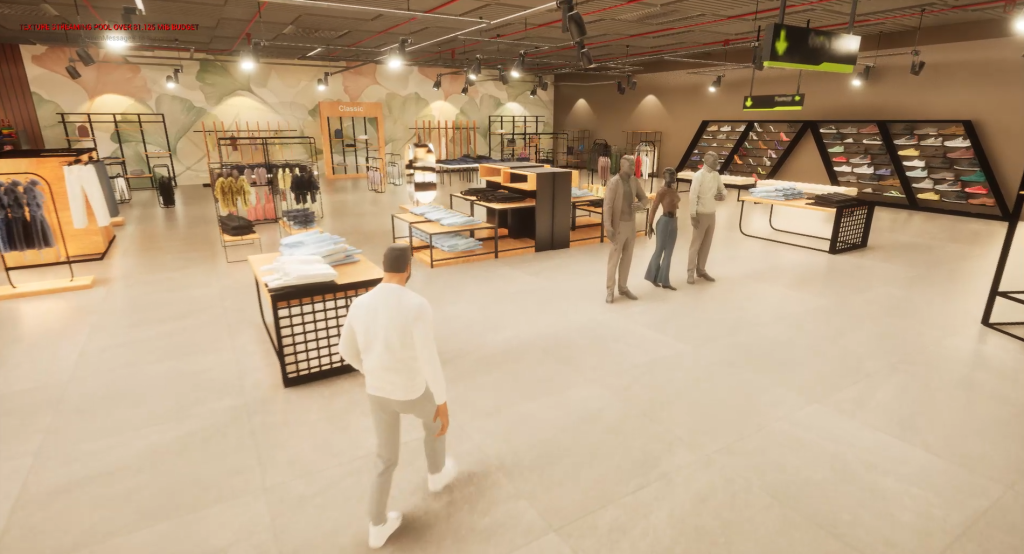
Conclusion
Queppelin is making it easier for fashion businesses to start their metaverse journey and capitalize on its full potential. Our experienced metaverse development team ensures that partner fashion businesses offer never-seen-before solutions to their audience. Something that adds immense value to user experience.
Our assistance help fashion businesses innovatively utilize metaverse components like Augmented Reality, Virtual Reality, Blockchain, Artificial Intelligence, Machine Learning, NFTs, etc. develop a stronghold in the market. With our expertise in metaverse technologies, fashion brands can integrate metaverse into their business operations and align it to short-term as well as long-term business goals.
The best part of exploring the metaverse is that there is not a pre-defined single route to it. Since Queppelin has made a name in this digital world and stands in the top 10 metaverse development companies worldwide, a partner like us gets you creative metaverse solutions that were not possible before in the real world.
